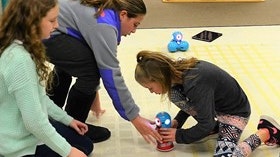Homepage
•
Learning Library
•
Blog
•
Preparing the youngest students for the future starts with STEM
Expand breadcrumbs
Expand breadcrumbs
- Learning Library
- Blog
- Preparing the youngest students for the future starts with STEM
- Homepage
- •
- Learning Library
- •
- Blog
- •
- Preparing the youngest students for the future starts with STEM
Preparing the youngest students for the future starts with STEM
By Sandra Wiseman
August 16, 2017








